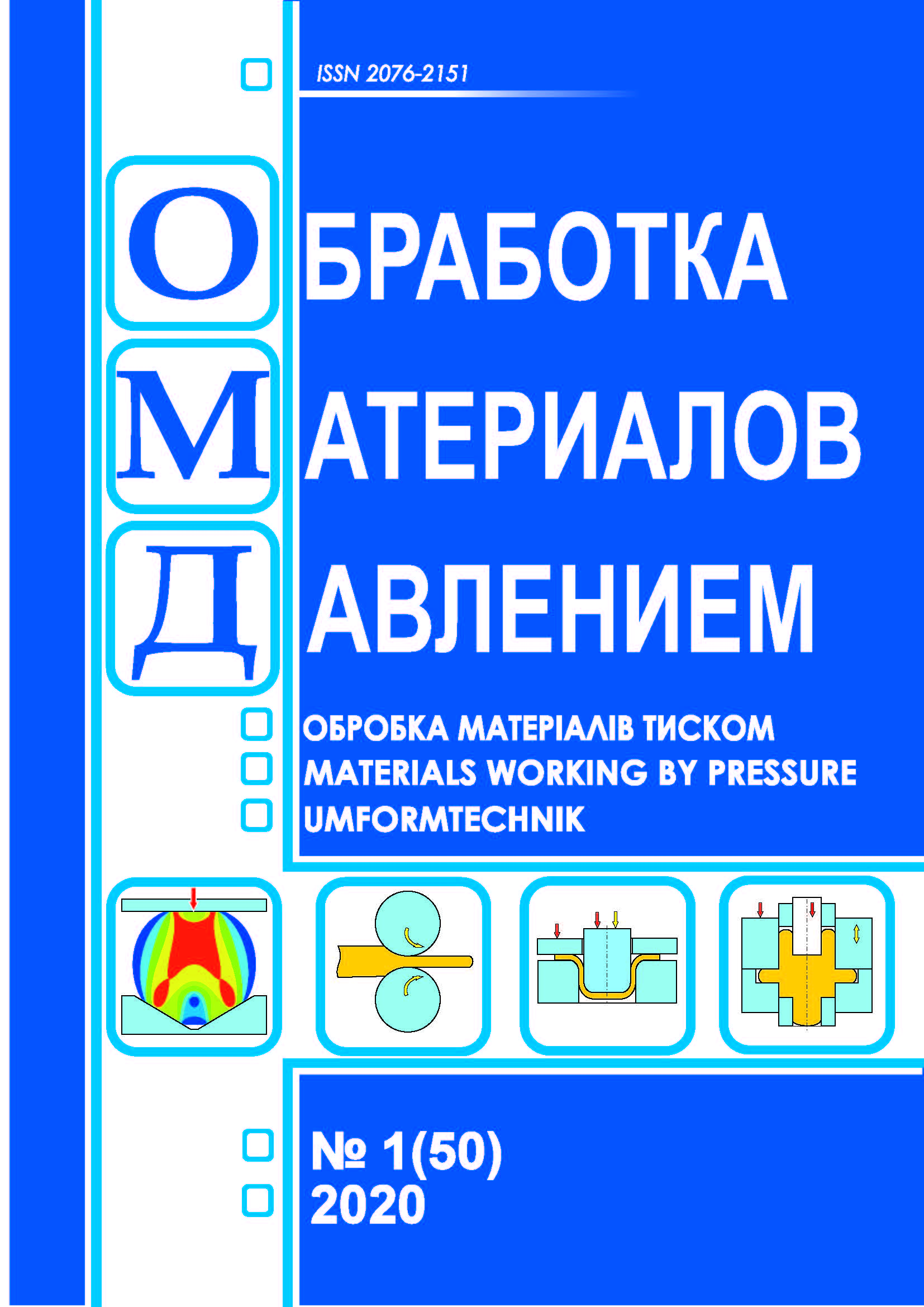Simulation of the hot rolling process of three-layer strips of aluminum and magnesium alloys.
DOI:
https://doi.org/10.37142/2076-2151/2020-1(50)259Keywords:
model, rolling, strip, aluminum, magnesium, temperature, deformation, force, Qform.Abstract
Konovodov D. V., Syvash V. I. Simulation of the hot rolling process of three-layer strips of aluminum and magnesium alloys. Material working by pressure. 2020. № 1 (50). Р. 259-265.
In order to obtain three-layer strips from aluminum and magnesium alloys, which combine high corrosion resistance and high damping properties, a model of the hot rolling process of such strips is considered in this paper. The model of the hot rolling process of three-layer strips was created using the QForm VX software product. In the construction of the model, experimentally determined stress-strain curves of the AW-2017A aluminium alloy and magnesium alloy AZ31 were used. The ranges of variation of the initial technological parameters, such as the degree and temperature of deformation, are justified. Using the developed mathematical model, a theoretical study of the hot rolling process of three-layer Al-Mg-Al strips in the temperature range of 360–410 °C and the degree of deformation of 30-50 % was done. Based on the simulation results, the complex influence of these technological parameters on the force and shape change of the metal during deformation was determined.
An experimental study of the rolling process of the three-layer strips from AW-2017A aluminum alloy and Z31 magnesium alloy on a laboratory mill duo 180 was performed. Using the strain gauge transducer, rolling force values for deformation degrees of 30 and 50 % were obtained. It was found that the rolling force values for the initial deformation temperature of 360 °C and 410 °C are not up to 72 kN at a deformation degree of 50 %. A visual assessment of the bond strength of metal layers after deformation was done.
Comparison of simulation results obtained by the proposed model of the rolling process of three-layer strips with the experimental data is done. The maximum deviations of the calculated rolling force data from experimental, for all values of deformation degrees, do not exceed 10 %.

